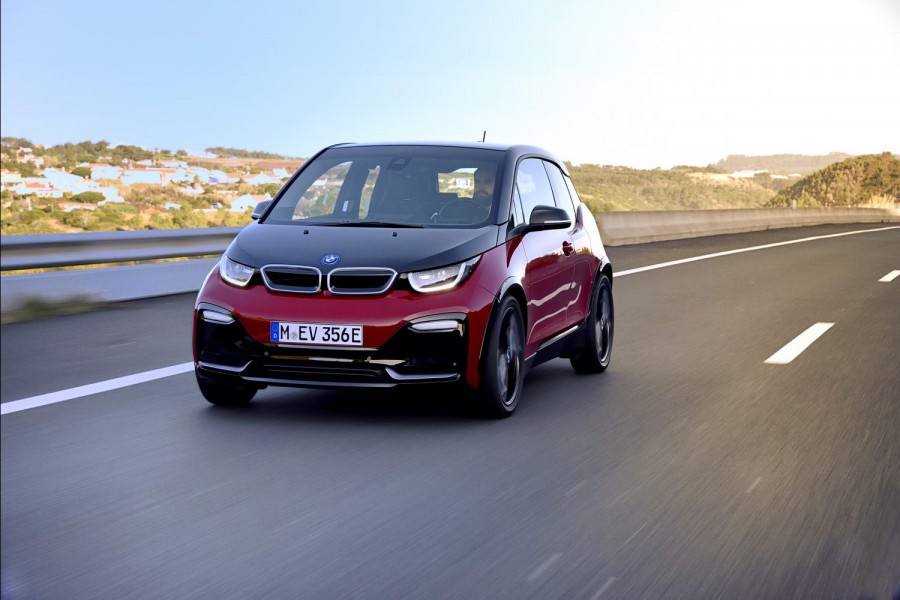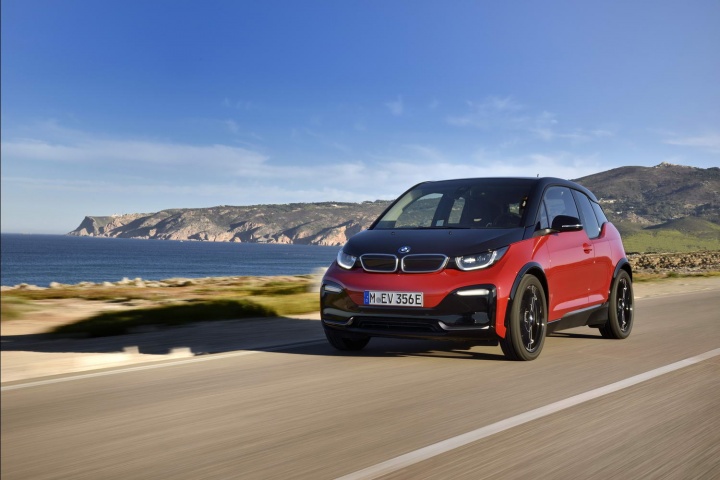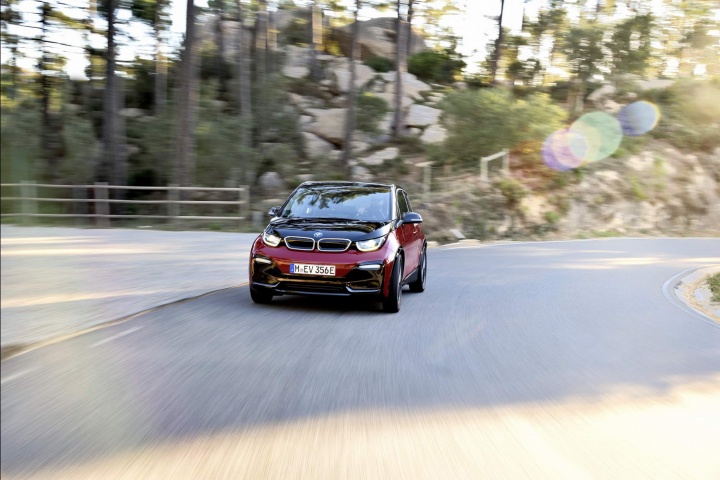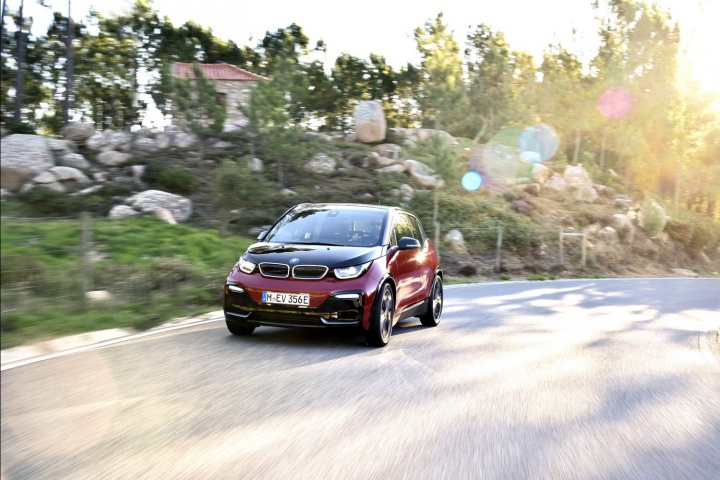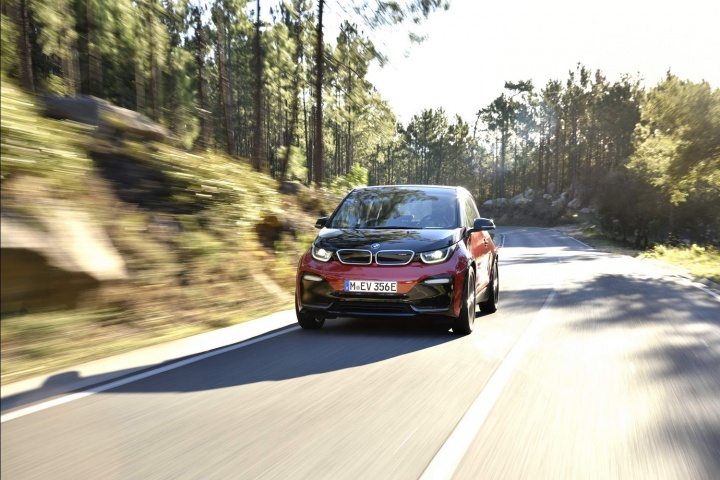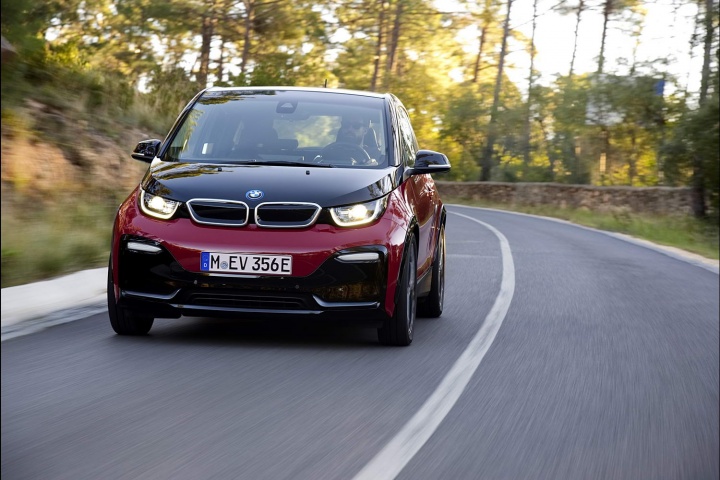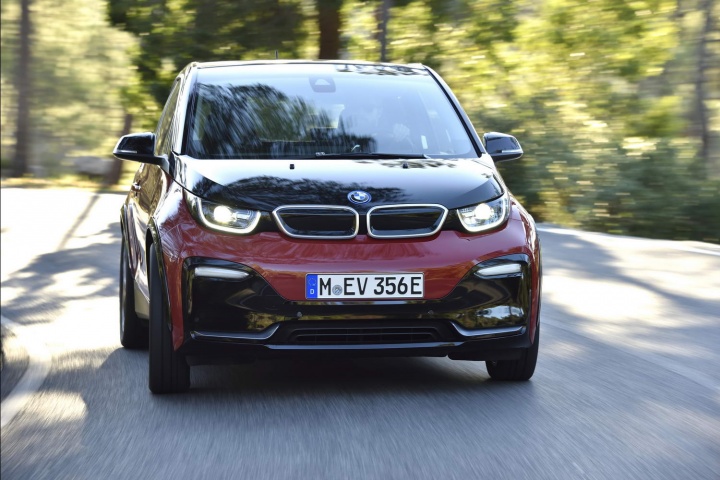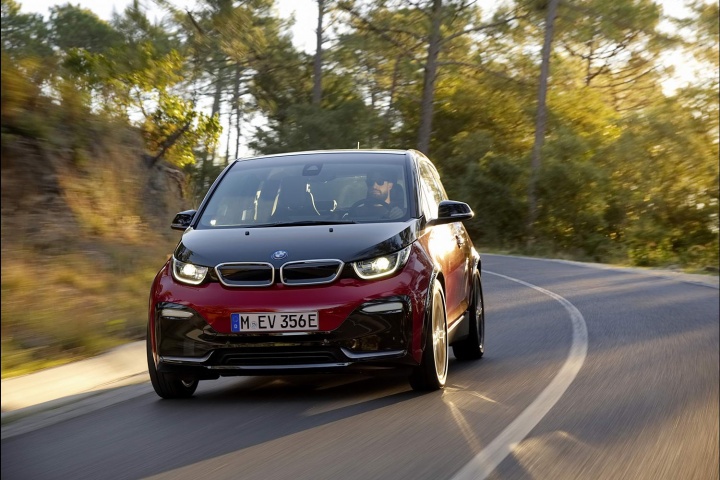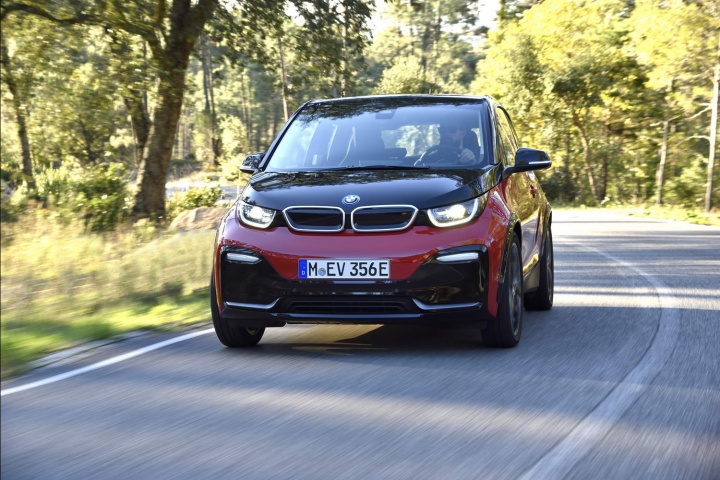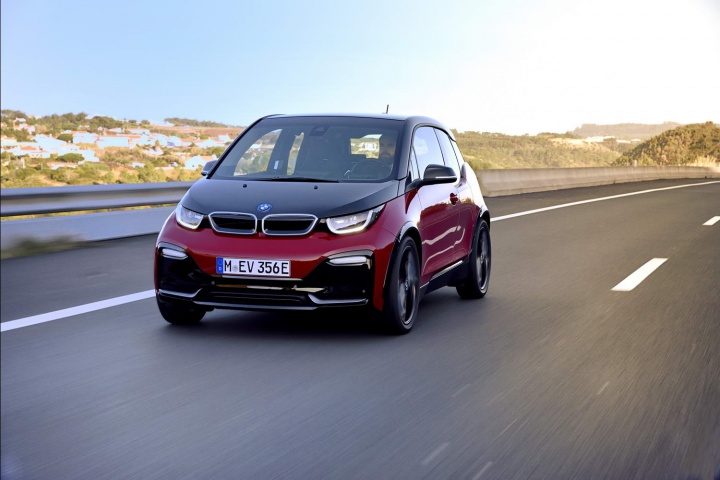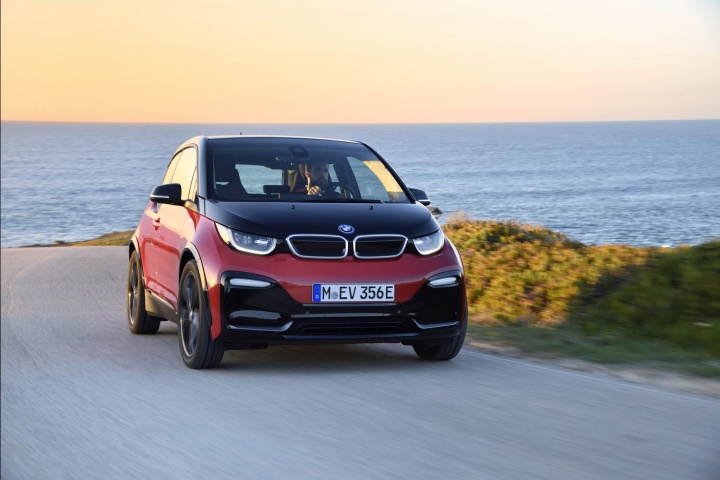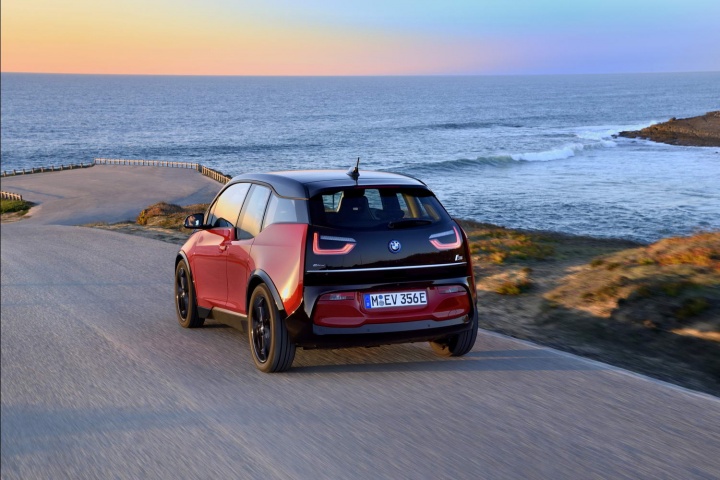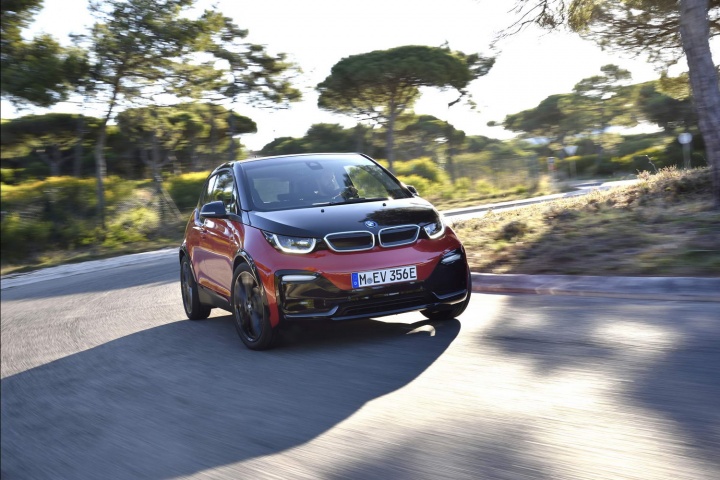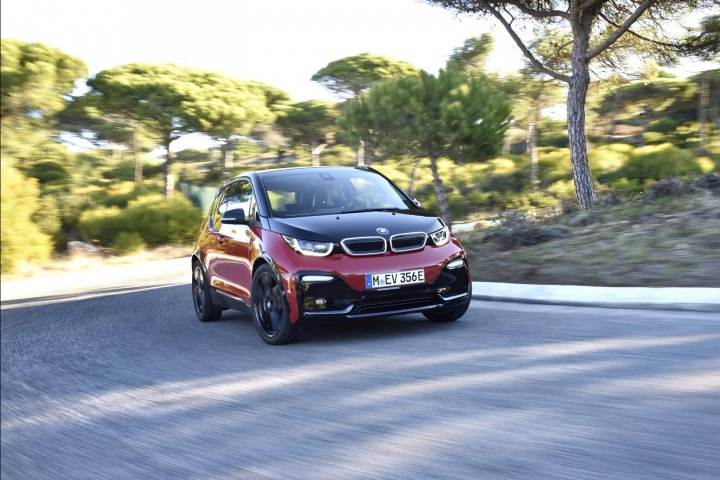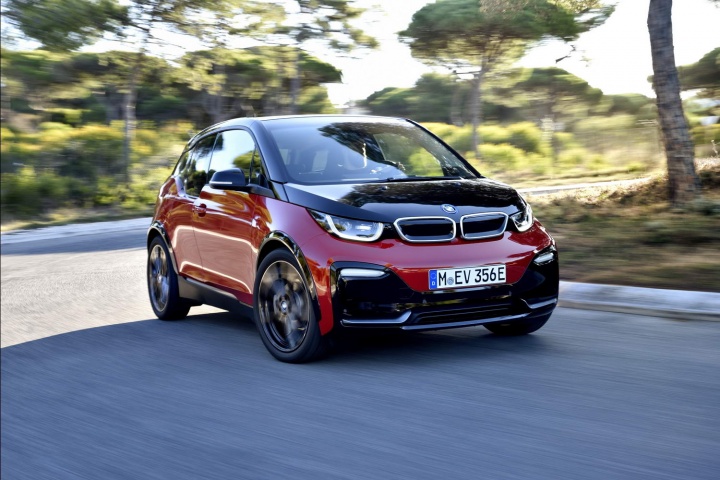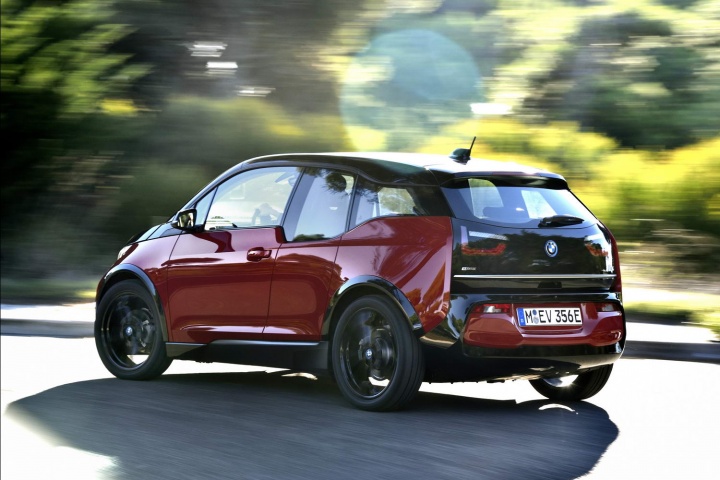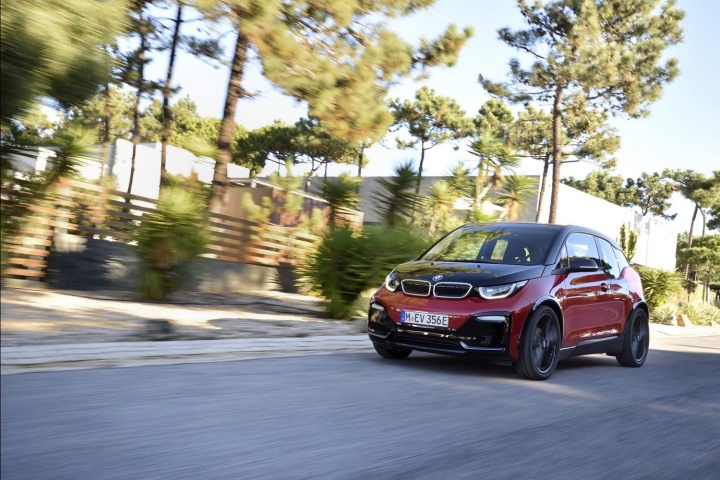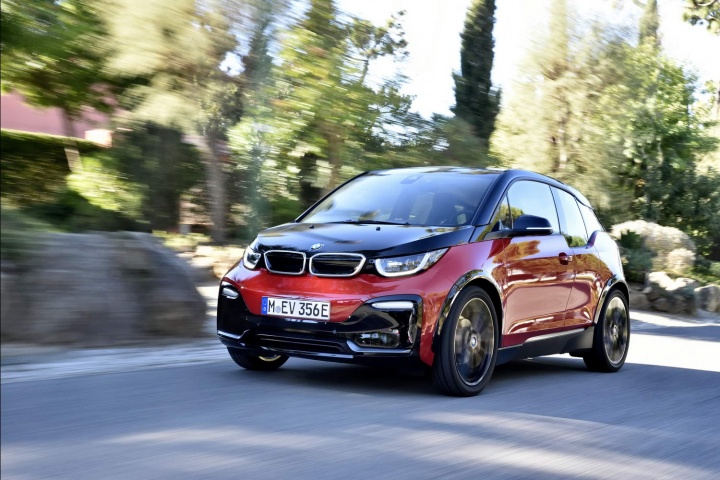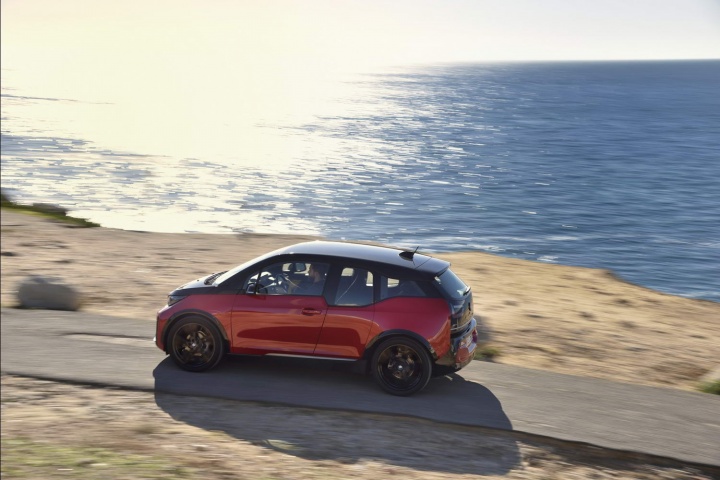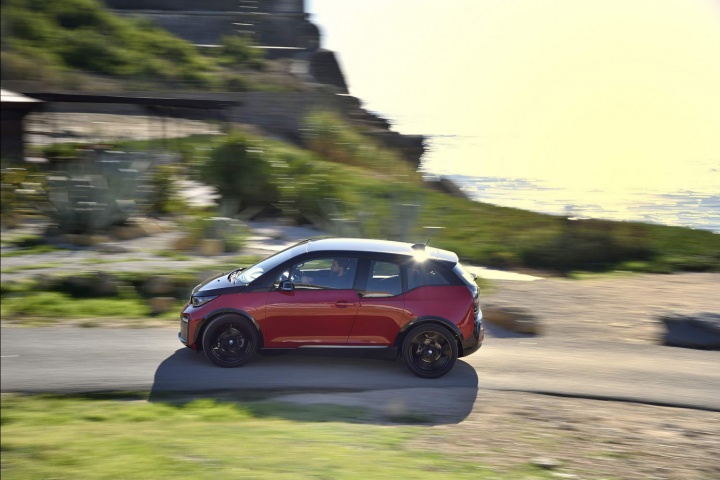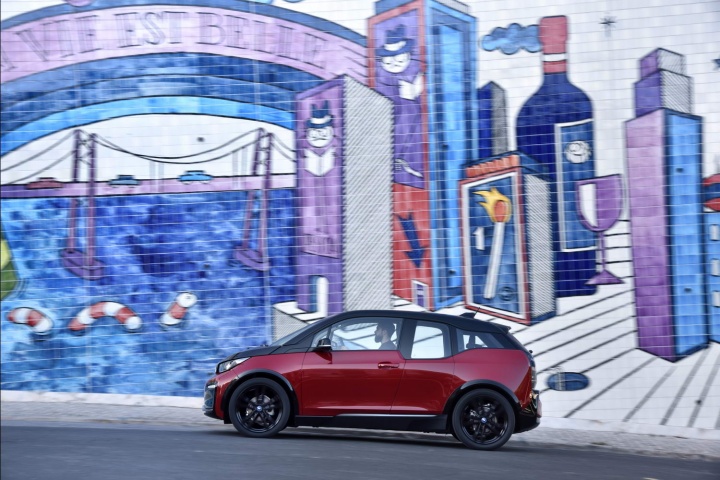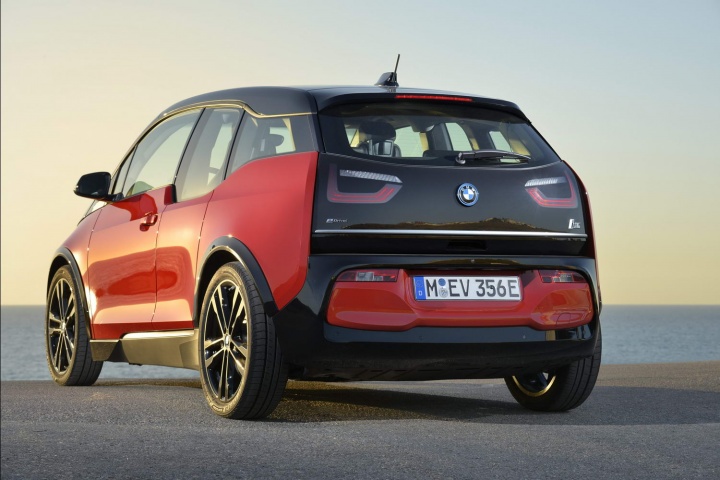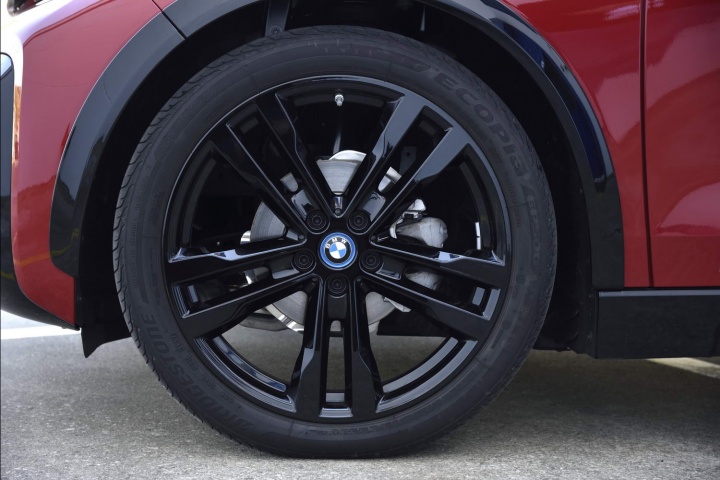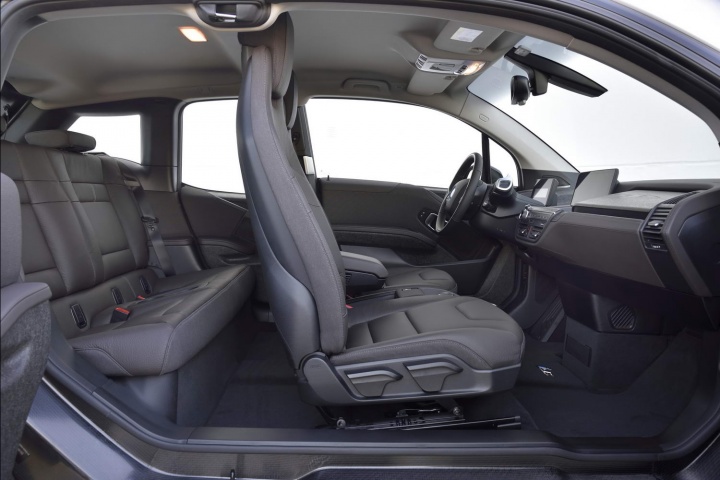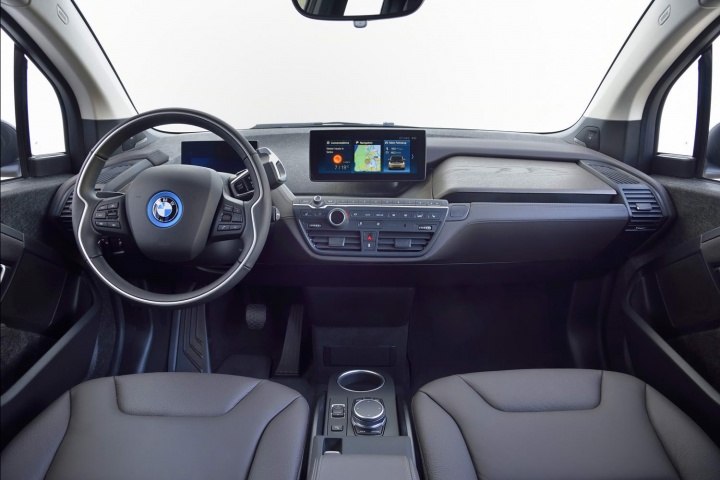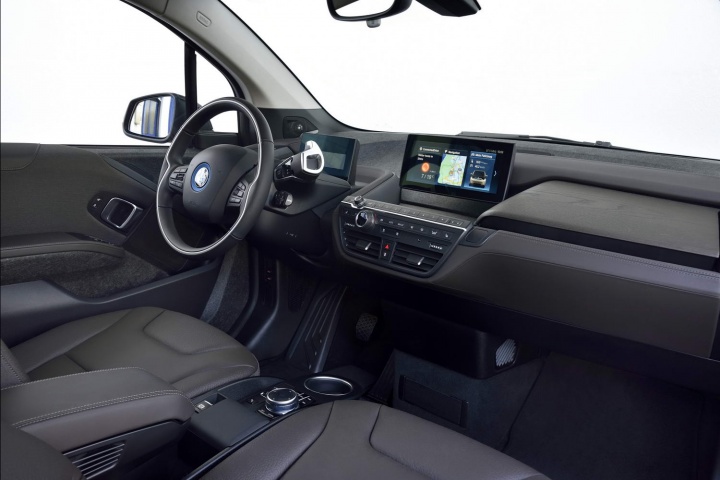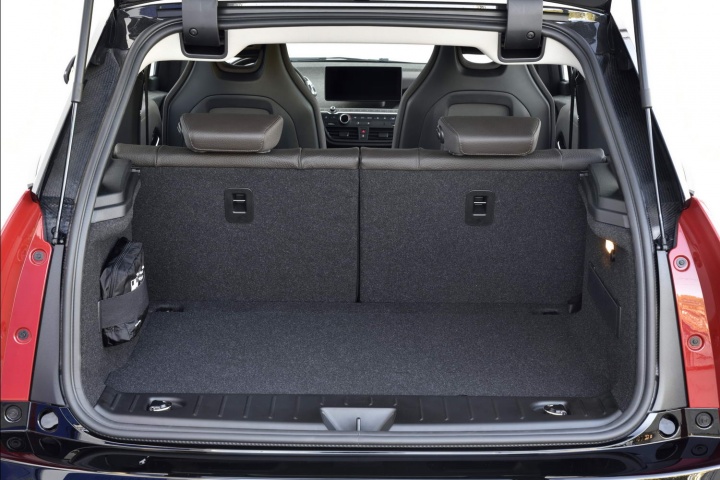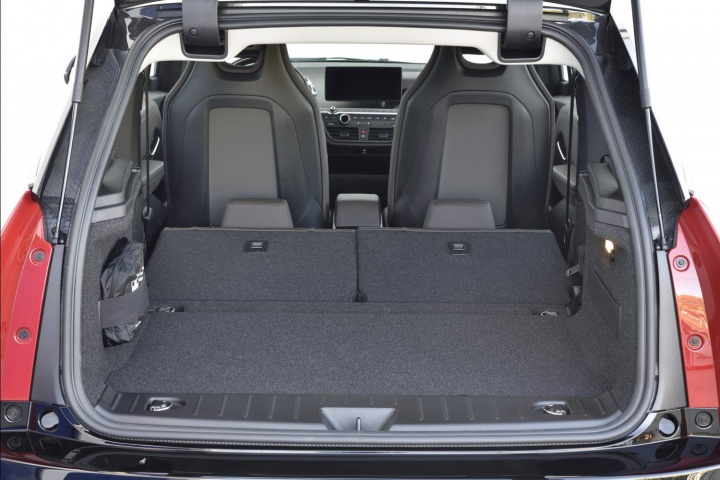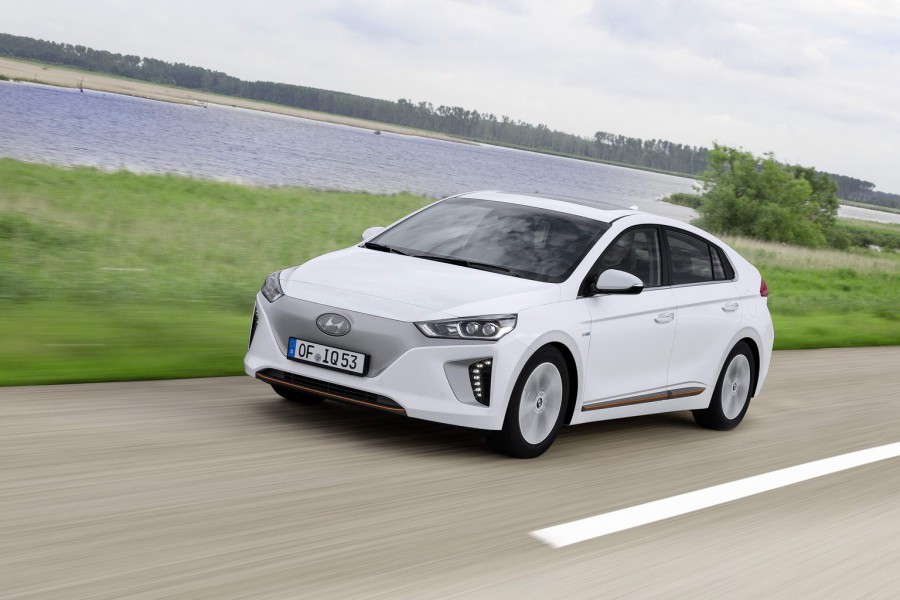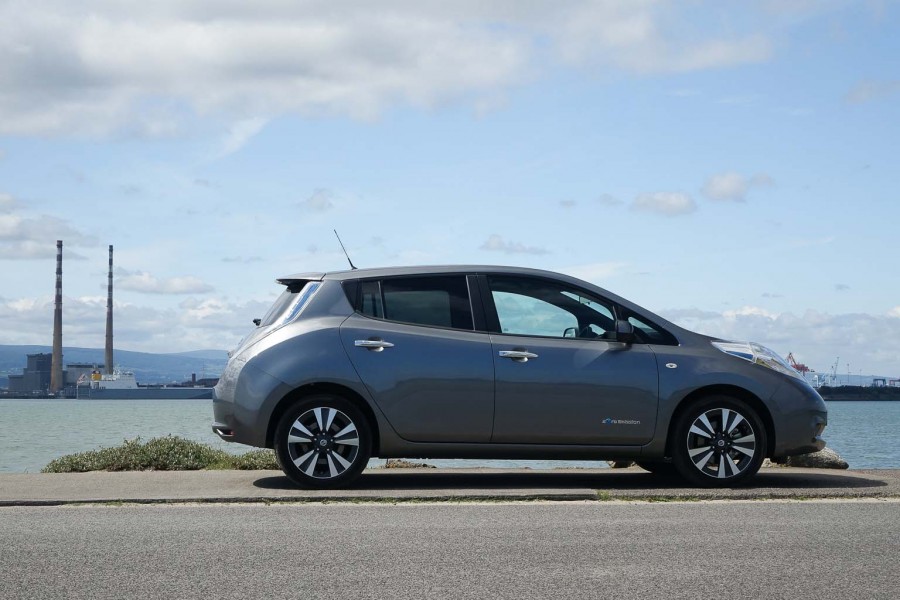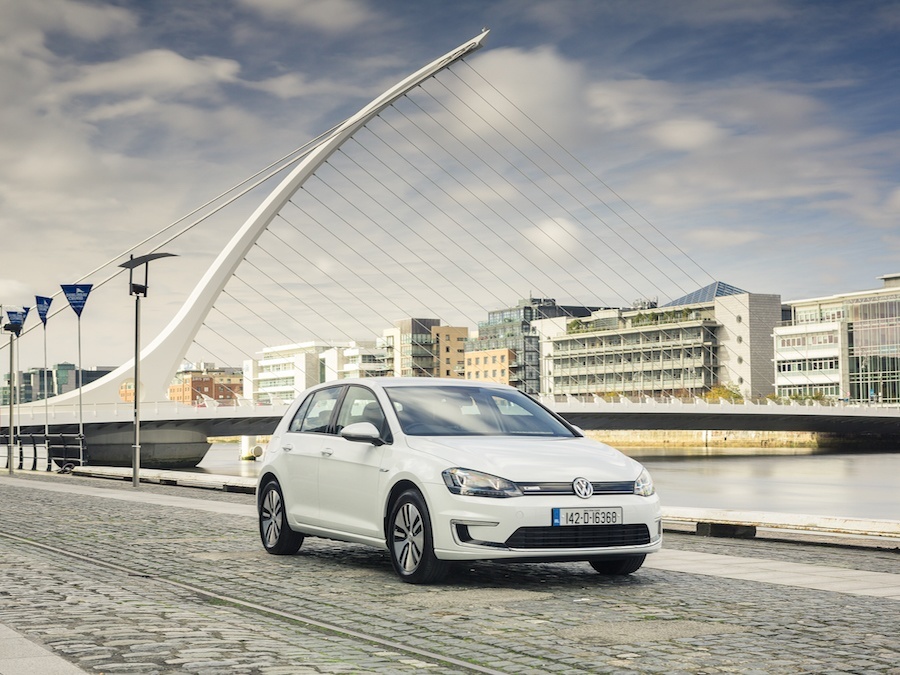It's midlife facelift time for the BMW i3 electric car (or 'Life Cycle Impulse' - LCI - according to BMW), so there are the usual tweaks to the interior and exterior, some new infotainment bits and pieces, impressive new traction control software and this, the range-topping i3s, a sportier model with a little more performance and some useful chassis tweaks.
In the metal
All versions of the facelifted BMW i3 get new bumpers front and rear, restyled A-pillars and repositioned badging to make the car look wider. Front lighting is now completely by LED and there are new colour options, called Imperial Blue metallic and Melbourne Red metallic (pictured). Here we test drive the sportier i3s variant and that gets its own distinct appearance that includes some differentiation in the bumper detailing and high-gloss black wheelarch 'spats'. At the back they cover a 40mm wider stance, while the i3s also sits 10mm lower than the standard BMW i3 thanks to sports suspension. The i3s comes as standard with a new design of 20-inch alloy wheels, shod in 20mm wider tyres, too (the standard i3 rides on 19-inch wheels), and buyers can choose to have the rims painted black for the full effect.
The interior of the BMW i3 hasn't changed very much. The i3s gets unique floor mats and the central iDrive display has been upgraded to the latest BMW 'tile' layout, though it's not a touchscreen system. There is a new 'Lodge' interior design option with new seat surfaces in a Solaric Brown natural leather/sheep's wool combination. As before, it's a unique cabin with loads of space for four and distinctive design throughout.
Driving it
We've never found the BMW i3 lacking in performance, certainly not off the line, where 100 per cent of its torque is on tap from the second you first press the accelerator pedal. Hence, the i3s's additional go continues to entertain, but that is not reason alone to go for it over and above the regular BMW i3. The i3s comes with several other updates that make it better to drive away from an urban environment, though, again, we didn't make any major complaints about the outgoing car... The wider stance, wider tyres and lower ride height all greatly contribute to a more hunkered down feel with a lower centre of gravity, and that is further enhanced by new springs, dampers and anti-roll bars. There's a new Sport setting for the i3s, as well, which merely tweaks the power assisted steering and throttle response, but it does add to the experience if you're looking for a little fun.
The steering is perhaps the weakest link in terms of communication with the driver, and the car can wash into understeer if you're a bit optimistic with corner entry speed, but for the most part it's agile and composed. It seems quieter all-round than the previous model, too. Saying that, you can hear the suspension at work and the wheels moving up and down over broken urban road surfaces, but, conversely, even the sportier i3s chassis setup doesn't seem to compromise massively on comfort. Now, it's not as smooth and soft on the road as the latest Volkswagen e-Golf, but neither is it a hard-riding board that jars your teeth.
One of the most significant updates to the BMW i3 will be all but ignored by most, as it's invisible. It's an improvement to the Dynamic Stability Control (DSC) system thanks to a novel way of reprogramming the software that oversees it. The result is far faster and less intrusive intervention of the DSC, resulting in an eradication of any nervousness, even in the wet, while allowing keener drivers a little leeway in the mid-way setting to extract a rear-drive feel from the car. Sounds odd to be talking like this about an electric city car, perhaps, but it all fits in with the BMW image and the best thing is that the improvements benefit all drivers. In fact, the approach is so unique that BMW has patented the idea and will be rolling it out across its whole line-up in time.
What you get for your money
While we'd argue that the BMW i3 is worth the premium it commands over all other similarly sized electric cars, when looked at with the cold heart of a calculator, it does look expensive. Prices start at €37,950 (including the SEAI grant and full VRT rebate) for the regular LCI BMW i3, while the new i3s starts at €42,130. The range extender engine is available for both and only the newer, 94Ah battery is now offered in Ireland. Standard equipment across the range includes parking sensors, heated front seats and BMW Professional Multimedia.
Summary
BMW has always had a knack for launching the right car and the right technology at the right time. As the tide is slowly turning toward electric cars, now is an ideal opportunity to focus the spotlight on its i3 once more. The updated EV retains all the personality and innovation of the original, while the new i3s version is perhaps even more befitting of the BMW badge on the bonnet. It's a hugely entertaining car for those based in an urban environment - yet more capable outside the city limits than most will expect.

